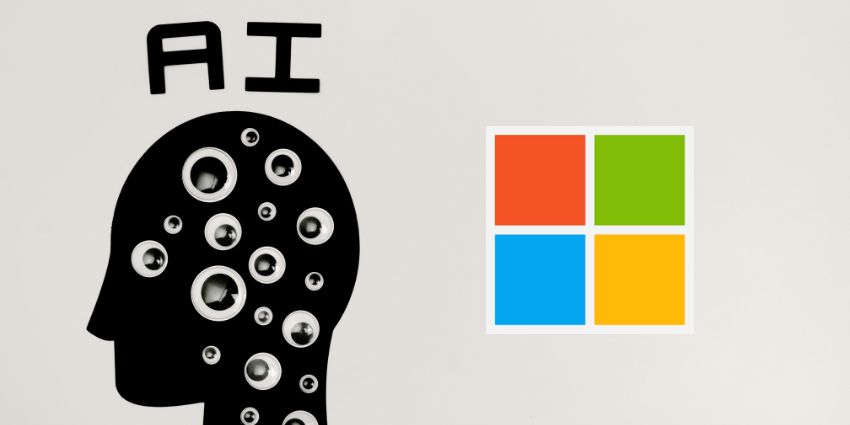It seems almost redundant to say that Microsoft are a huge company. One of the largest, most powerful businesses on the planet, they have developed from personal computing to proliferate almost every area of modern technology, from gaming with Xbox, to cloud infrastructure with Azure. The fact that they are so large and cover so many areas makes the fact that Microsoft Teams has been so prominent during Ignite even more impressive.
If you go back a few years you might have been right to assume that a collaboration platform would only constitute a tiny proportion of Microsoft’s overall strategy, you would have been wrong. Microsoft Teams now formulates the main proposition of Microsoft’s teamwork strategy, alongside Yammer and SharePoint. There has been a real buzz within the industry when it comes to workflow, and all of the major technology providers are looking for ways to enhance and optimise efficacy for all variety of organisations. Collaboration platforms appear to be the answer, the central application to consolidate all workflows and enable a sole focus for users to transition through their day to day tasks without having to zigzag from app to app, and from tool to tool.
There is no other organisation on the planet that has more tools at their disposal to populate their collaboration offering than Microsoft. Their suite of office applications and other tools, such as Yammer, SharePoint and now Microsoft Search can all be integrated into the Microsoft Teams arsenal to make it the most powerful, feature rich workflow tool available.
Microsoft Teams really has taken centre stage this week at Microsoft Ignite and UC Today have been on hand to bring you all the latest news, and there has been a lot. Teams is the fastest growing Microsoft app ever, it has even more new features and its target market is now being expanded so it’s more relevant to even more people.
During Ignite we were lucky enough to be joined by Keara James, who is Product Marketing Manager for Microsoft Teams, so she could tell us why the platform is becoming such a crucial part of Microsoft’s overall portfolio. For Microsoft, the task now appears to be more expanding the scope of collaboration, in general, so Teams can become the platform of choice for a whole new section of the workforce.
“We have really expanded Teams to meet the needs of all workers. When you think about first-line workers, in particular, it’s a very nascent group of people, what they have been doing has been fine but why not also empower them with the productivity tools they need too.”
From their inception, collaboration tools have been targeted more at knowledge workers, office based, technically minded groups of people for whom collaborating was a major facet of their day to day working lives. When Microsoft talk about firstline, or frontline, workers they are referring to staff who are directly dealing with customers or tasks at the coalface, nurses, engineers, retail staff who traditionally have not been the beneficiaries of collaboration technology tools. Microsoft want to change this.
Keara cites multiple of examples of how Teams, and its new features can now be used by this section of the workforce to improve and enhance their day to day tasks and processes. The new scheduling tools, within Shifts, have wide ranging relevance for all manner of organisations and Teams can provide a consolidated platform to manage and distribute timetables and shift patterns.
Microsoft are targeting industries that require a higher level of compliance and Teams can now be used actively as an antidote for the rising issues of shadow IT. Many employees, across various verticals, have taken it upon themselves to use consumer applications to improve communication and collaboration in their businesses, but without considering security and compliance.
The healthcare industry has been one of those impacted by the rise of shadow IT and now it is a huge focus area for Microsoft. The health care industry is the biggest employer in Untied States and also in the United Kingdom so the scope for growth is huge.
“We are hearing about shadow IT a lot. Healthcare for example is highly sensitive, highly regulated with huge numbers of compliance measures that need to be met. Microsoft is so excited to work with our healthcare customers to offer them enterprise level security. Secure and compliant messaging and collaboration is going to be available to all Teams users.”
Many of the news tools now available in Teams, including the schedule management functions, image annotation and federated messaging can be of huge value to the industry. Care co-ordination solutions will also be made available so that healthcare professionals can more easily access, collaborate and communicate around a particular patients record, all from within Teams, whilst remaining HIPAA compliance.
“How do we make Teams as useful for all workers as possible? Offering new features and functions that specifically help particular a workforce is a key focus for us.”
Microsoft Teams is receiving a huge push from Microsoft, and it’s easy to see why. The potential scope for the solution is huge. Today the focus is health care but no doubt Microsoft have plans for even more specific sectors in the future. If you don’t use Teams now, or don’t see its relevance for your role right now, Microsoft are working on a way to change that.






